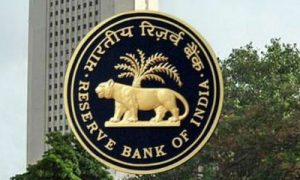At a recently held discussion on the Clubhouse app, a panel of experts assembled by Mint discussed global investing. The panel included Shankar Sharma, VC & Joint MD, First Global, Mrin Agarwal, Founder Director, Finsafe India, Pratik Oswal, Head – Passive Funds, Motilal Oswal Asset Management Company, Viram Shah, Co-Founder & CEO, Vested Finance and Swastik Nigam, Founder & CEO, Winvesta. You can listen to a recording of the discussion.
Why should Indian investors invest some of their portfolios abroad?
Shankar Sharma, VC & Joint MD, First Global, found that India “is an even smaller part of the global market caps, barely being 2.5%, which means letting go of more than 97.5% of the global opportunities. Globally one can diversify across 10,000 stocks; one can pick 50-200 different kinds of companies, which provide tremendous returns at lower risks – compared to a single company”. “A significant part of India’s own GDP which is not captured on the domestic stock exchanges. Many sectors have a 100% FDI allowance, especially Amazon, Facebook, and Google – even automotive sectors”, Swastik Nigam, Founder & CEO, Winvesta, observed. “You also get access to many esoteric sectors that you wouldn’t have access to – like robotics, or commodity funds”, he added.
Is the recommended 10-20% allocation of portfolios for global investments, suited to India’s low market cap?
“Being exposed to one country gives an increased amount of risk without adequate compensation. Being a businessman or earning person in India with financial products here already exposes one to the Indian risks. Hence, investing abroad is a good way of reducing it”, Sharma said. He added that “constrained by an LRS of $250,000, using 100% available to one’s family for investments every year, easily 30-50% of one’s net worth should go to global investments”. Mrin Agarwal, Founder Director, Finsafe India, however differed, “in terms of percentage allocation, 15-20% is good at the time. It was only up to the last 2 years that people were more open about investing abroad. Typically going to a period of 15 years back, the purpose was to move the money abroad with the investments being real estate and FDs to have dollar assets”
Choice of Products: From there being almost no funds with international stocks to the plethora of funds now, or the direct stock investing options; How does one ensure a balanced allocation?
“Asset allocation is a key strategy to investors and people are coming to that. Indian equities in the last 10 years have not been great, forcing people to diversify, with many people looking at asset classes outside equity”, noted Pratik Oswal, Head – Passive Funds, Motilal Oswal Asset Management Company. The company which brought out the first global ETF in India – the Motilal NASDAQ ETF in 2011, today delivering a return of 24.17% CAGR, is now working on their emerging markets fund. Oswal noted, “People in developed markets reveal to having 20-40% of their allocation in global markets. And LRS limits are not a problem today, especially with mutual funds”.
What about international brokerage firms providing access to a gamut of stocks, as opposed to limited mutual funds?
“It depends on the investor’s choice. They could prefer the easier – investing through mutual funds. But we have seen enough people who are interested in creating their own portfolios, buying directly, either stocks or the wide variety of ETFs that are available in the US markets”, said Viram Shah, Co-Founder & CEO, Vested Finance.
What are the costs that come with direct investing abroad?
“TCS is tax collection at source, and for investments above 7 lakh rupees, or any flow of money under LRS, you do need to pay 5% TCS on that. That is a cash flow burden”, Nigam said. “The second point is one major point of friction – the forex charges. Banks have anything around 200 rupees to 2000 rupees as a fixed cost. Over and above, there would be a forex cost which is broadly around the 1.25% mark, or can even be as little as 0.5% or as high as 2.5%. The TCS however, is reclaimable. It’s not a tax problem, but a cash problem”, he added. Foreign stocks are taxed as unlisted stocks. For holding periods less than 2 years, gains are taxed at slab rate. For holding periods above 2 years, gains are taxed at 20% with the benefit of indexation. Investors should also note that foreign investments need to be disclosed every year in Schedule FA of the Income Tax return.




































